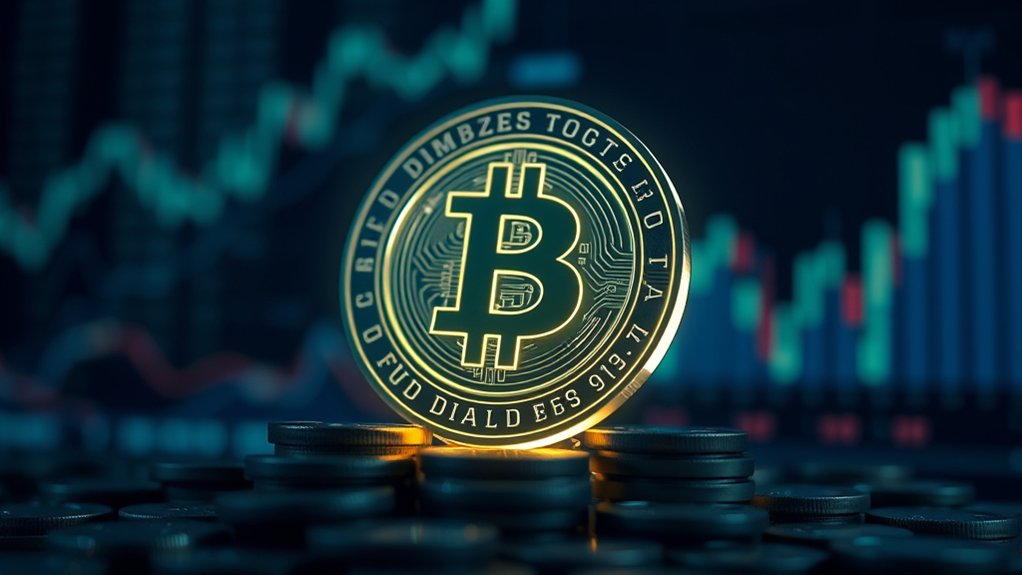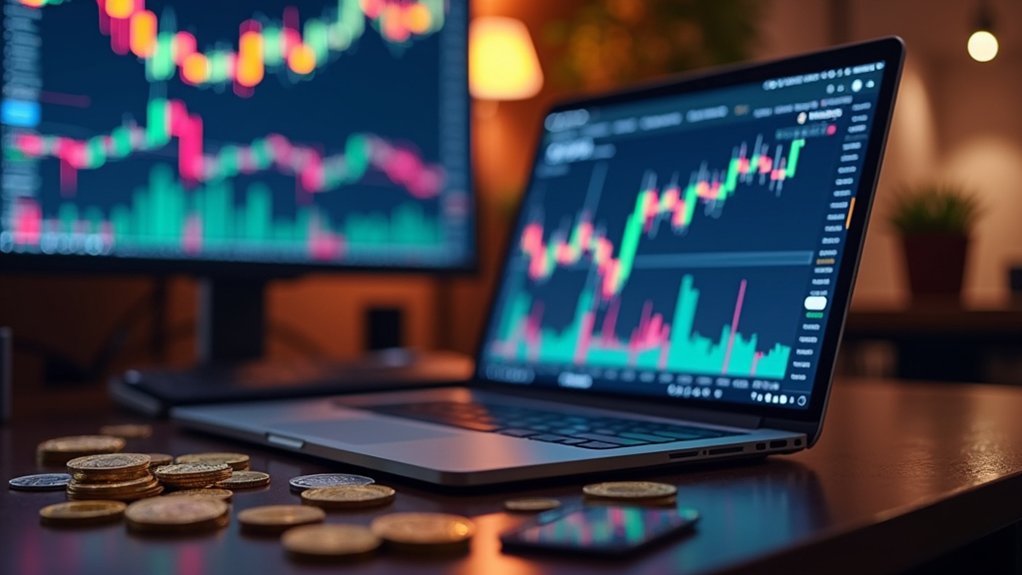FDV, or Fully Diluted Valuation, is a fancy way of saying, “What if all the coins were out?” It gives a snapshot of a crypto project’s total value if every last token hit the market. Handy for spotting potential worth, right? But beware! It doesn’t factor in market mood swings or the real-world chaos of crypto trading. Investors need more than just this number to get the full picture. Stick around for more insights into this crypto puzzle.

In the wild world of cryptocurrency, FDV—Fully Diluted Valuation—stands out like a neon sign at a midnight gas station. It’s flashy and hard to ignore. But what exactly is it? Simply put, FDV estimates a cryptocurrency’s total market value if every single token were in circulation. That’s right—every last one. This number gives investors a broader view of a project’s future potential, more than just the current circulating supply. FDV can be particularly useful when assessing market cap and its implications for investment decisions.
Unlike market cap, which is like looking at only one side of a two-faced coin, FDV includes all potential tokens that could be issued.
Calculating FDV is straightforward. Just take the current token price and multiply it by the maximum possible supply. Easy, right? But wait! You also have to take into account token burning. Yes, tokens can disappear into thin air, potentially affecting that maximum supply number. Data for this calculation is often found on sites like CoinMarketCap or Coingecko, which is handy because why hunt for information when it’s served on a platter?
FDV plays an essential role in market dynamics. It helps predict price changes as new tokens flood the market. If the current market cap is lower than the FDV, it can signal future price pressures—or maybe even opportunities. High FDV with low circulating supply can suggest potential downward price pressure as unreleased tokens enter the market. Additionally, projects with a high maximum supply of tokens may experience greater volatility as they reach their full potential.
Token release schedules? They’re important, too. Understanding when tokens will be released helps investors forecast market trends and potential dilution effects.
Now, let’s not get carried away. FDV isn’t perfect. It doesn’t account for changes in market conditions or investor sentiment. It’s just one piece of the puzzle. But when combined with other metrics, FDV offers a more complete picture of a project’s value.
In a landscape filled with uncertainty, having a tool like FDV is necessary. It can help investors dodge overvalued projects and spot potential gems. So, next time someone mentions FDV, you’ll know it’s not just a fancy acronym; it’s a key player in the crypto game.
Frequently Asked Questions
How Is FDV Calculated for Different Cryptocurrencies?
Calculating FDV for cryptocurrencies? It’s simple, really.
Take the current token price—easy enough, right? Then, multiply it by the maximum supply of tokens. Voila! You’ve got your FDV.
It’s all about imagining a world where every token is in circulation, which is a bit of a stretch. But hey, it gives investors something to chew on.
Just remember, this number might not reflect reality. Don’t get too cozy with it!
What Role Does FDV Play in Investment Decisions?
FDV plays a big role in investment decisions.
It’s like looking into a crystal ball, but not really. Investors check FDV to gauge future price dynamics. More tokens might mean price drops—fun, right?
It helps compare projects by their potential, not just the current hype.
But hold on! It’s not the only metric. Relying solely on FDV? That’s a rookie move.
It’s one piece of a messy puzzle, folks. Keep your eyes open!
Can FDV Change Over Time?
Absolutely, FDV can change over time.
It’s like a rollercoaster ride—prices go up, prices go down. The total supply? Yeah, that can shift too.
New tokens might pop up, or some could vanish. Market trends and regulations can throw a wrench in things.
So, one day it looks great, and the next? Not so much. Investors need to keep their eyes peeled.
Nothing in crypto is set in stone, folks!
Is FDV the Same as Market Capitalization?
No, FDV isn’t the same as market capitalization.
It’s like comparing apples to oranges. FDV looks at the maximum possible token supply, while market cap only counts what’s actually out there.
So, FDV gives a peek into the future, and market cap? Well, it’s all about the here and now.
One’s about potential, the other’s about reality. Both are important, but they tell very different stories about a crypto project.
How Does FDV Affect Token Distribution?
FDV messes with token distribution in a big way. It includes all tokens, even the ones chilling in reserves or locked up tight.
So, when those tokens finally see the light, watch out! The current market cap might look cozy, but the future could be a price dilution disaster.
Investors need to keep their eyes peeled. FDV isn’t just a number; it’s a potential market shake-up waiting to happen. Buckle up!





